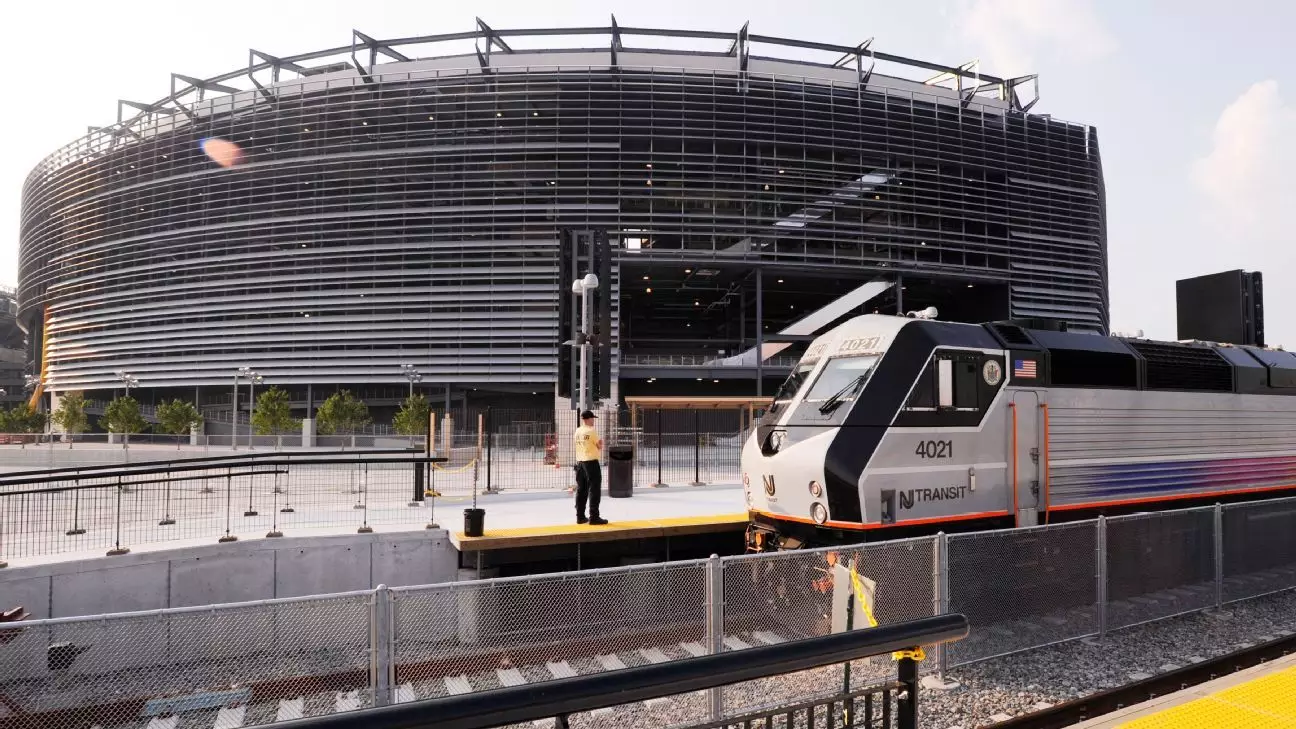As anticipation builds for the 2026 FIFA World Cup in the United States, Canada, and Mexico, the Northeast area, featuring Boston, New York/New Jersey, and Philadelphia, is positioned as a pivotal hub for visitors. The region is keen to present itself as a singular megasite, where the allure of soccer meets the convenience of Amtrak’s rail services, promising an accessible gateway for millions. However, the integration of this ambitious plan with Amtrak’s historical performance raises significant concerns.
Expert assessments highlight a daunting reality: Amtrak, the national rail service, is under tremendous strain. Critics like Jim Mathews, the president of the Rail Passengers Association, express alarm at the prospect of accommodating an influx of fans – estimated at approximately 6.5 million – within an already overstretched system. The critical components of Amtrak’s infrastructure, particularly along the Northeast Corridor, are not just aging; they are overwhelmed. Renowned as the busiest rail corridor in the U.S., it’s marked by antiquated tunnels, a maze of bridges, and an operational capacity that is far from reliable.
Age-Old Infrastructure Meets Rising Demand
Amtrak’s existing infrastructure consists of 457 miles of track that connects major cities—yet it bears the scars of neglect that span decades. The corridor not only serves commuters but also hosts essential train services essential for the upcoming World Cup. The expectations for smooth operations are magnified as the tournament approaches, but Amtrak’s own reports suggest a different narrative; 10% of trains suffered delays or cancellations before even considering the World Cup crowd.
Recent incidents reflect a system under duress—service disruptions during the hot summer months; outdated equipment failures; and overloaded trains have become common complaints. As the heat exacerbates existing issues like power failures, the concerns of travel advocates are justified. The risk of a breakdown when faced with the influx of international tourists is an unsettling prospect for event organizers and local governments alike, who are counting on Amtrak’s service to seamlessly transport fans to games and tourist attractions.
Fiscal Constraints and Future Prospects
Financial limitations are a critical factor affecting Amtrak’s ability to meet burgeoning demands. Approximately $22 billion pledged for Amtrak under current infrastructure initiatives offers hope, yet many transformational projects are years away from completion. And while the Biden Administration is committed to improving rail systems, ongoing budgetary hurdles hinder immediate relief. Rail advocates lament a long history of congressional underfunding, warning that without modernization today, the U.S. risks becoming a subpar host in an era of mega sporting events.
FIFA’s estimation of World Cup attendance highlights a monumental opportunity for the U.S. to showcase its transportation capabilities—but lax investment in rail infrastructure could squander this chance to make a lasting impression. The illusion of a modern transportation system is shattered by an operational reality that struggles even under lesser loads.
Moving Forward: Amtrak’s Adaptation Plans
In preparation for the World Cup, organizers and Amtrak officials are coordinating efforts that may result in improvements, including the introduction of enhanced fleet options like the “NextGen” Acelas, which will provide more seating capacity. Still, these initiatives will need to contend with long-standing inefficiencies and fluctuating demand patterns.
Local organizers express optimism about Amtrak’s ability to handle the swell of passengers, yet skepticism remains. There’s a reliance upon Amtrak’s historical experience with large events—success tied to careful planning and communication between transportation authorities and local agencies. This need for synergy becomes paramount when anticipating the World Cup’s logistical challenges, such as ensuring fans can access venues without overwhelming the existing suburban commuter systems.
As Alex Lasry, CEO of the New York/New Jersey host committee, stated, “the scale and scope for this is so big that it’s one of those unparalleled events.” Such optimism emphasizes the necessity for strategic foresight in operations and passenger satisfaction. Many fans will rely on Amtrak not just for convenience but as a critical aspect of their World Cup experience—whether heading to games or exploring nearby attractions.
The Balancing Act: Spectators, Residents, and Infrastructure
A fundamental issue remains: how to balance the needs of local populations with the anticipated influx of World Cup visitors. The hope that local commuters can travel unimpeded while new fans pour into the system is a thin line to walk. Lasry’s perspective of having a global plan in place is crucial—without effective coordination, the risk of operational chaos looms large.
Amtrak’s ability to finely tune its services during such influxes could ultimately determine the success of the rail system during the event. Past experiences must inform future execution, guiding how to optimize scheduling, manage crowd logistics, and facilitate communication among various transport entities.
The urgency for necessary investments has never been more apparent. While Amtrak’s leadership may express confidence in addressing these issues, the real test lies in their ability to implement timely and effective solutions. From infrastructure fixes to improved passenger experiences, the means to uphold a world-class standard during such a globally significant event is at stake.
In this evolving dynamic between potential and reality, the effectiveness of rail travel during the 2026 FIFA World Cup will resonate far beyond the everyday commuter, shaping the future of America’s public transportation dialogue.

